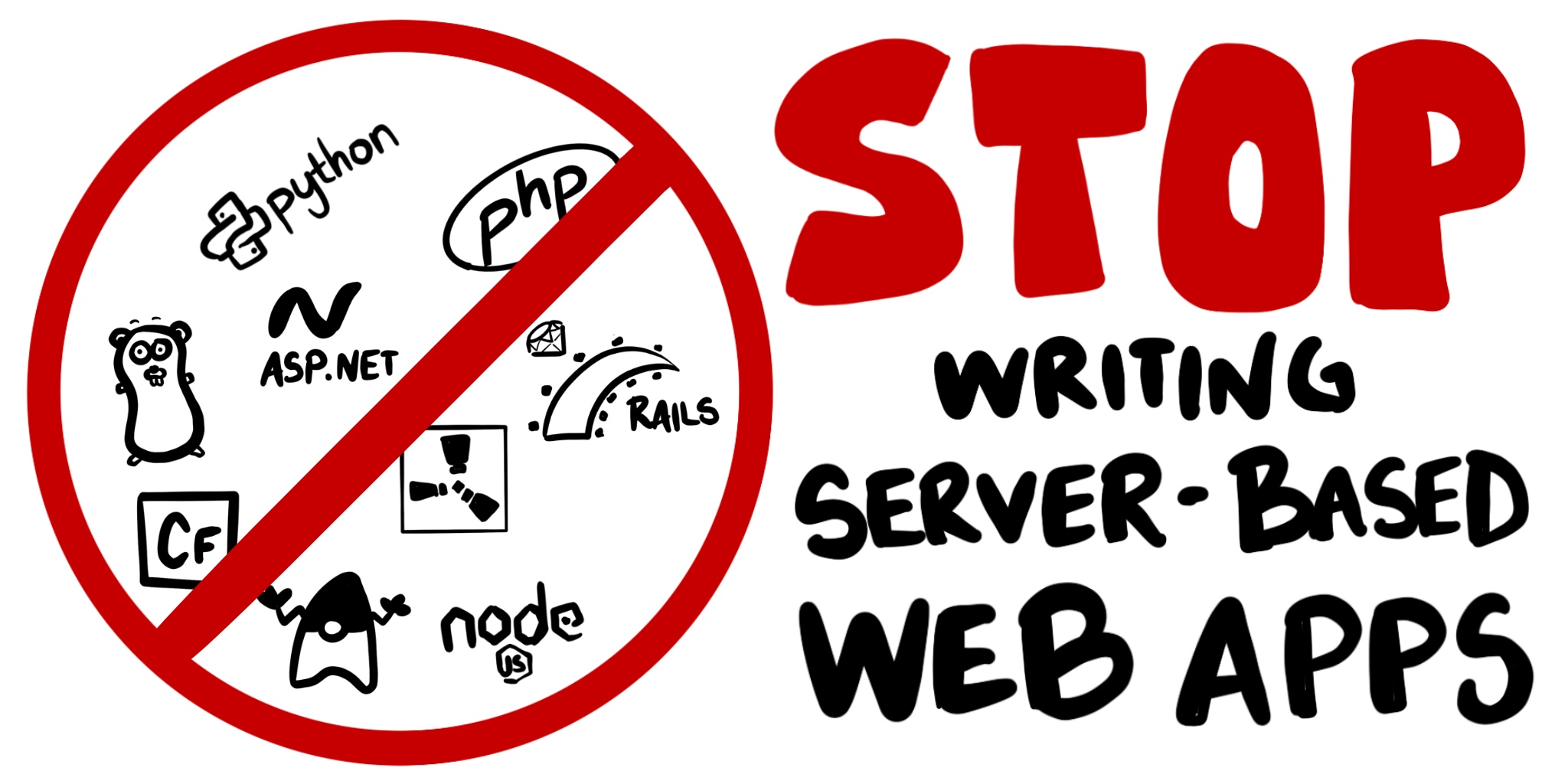Articles tagged asp-dot-net
How to Deploy a .NET Container with AWS ECS Fargate

In a previous article, we learned how to host a serverless .NET application using AWS Lambda. We talked about the history of serverless and how companies are using these types of technology to simplify delivering APIs and functionality faster than traditional methods. Some problems will arise in this type of application when you need more capability than standard HTTP requests like GET, POST, PUT, DELETE, etc. Web Sockets is a great example of this. Table...
Deploy a .NET Container with AWS Fargate

In the last article I wrote, I showed you how to host a serverless .NET application using AWS Lambda. In the article, we talked about the history of serverless and how companies are using these types of technology to simplify the process of delivering APIs and functionality faster than traditional methods. There are some problems that will start to arise in this type of application when you need more capability than your standard HTTP protocols...
How to Authenticate an AWS Lambda Function in C#

Serverless was only first coined as a concept 8 years ago in 2012 by Ken Fromm in The future of the world is serverless. Even with the rise of cloud computing, the world still revolves around servers. That won’t last, though. Cloud apps are moving into a serverless world, and that will bring big implications for the creation and distribution of software and applications. If you come from traditional service architecture roots of on-premises or...
How to Master the Filestream in C#

We live in a world that moves fast. Compared to the mid 90s through early 2000s, we have incredibly intelligent technology. Effectively, we have super-computers in our pockets. Our actual, modern supercomputers would have seemed like works of fiction just two decades ago. Not only is our ability to compute fast, but so is our data - with cellular 4G averaging 18.1 Mbps and 5G coming in at an average of 111.8 Mbps, at the...
Stop Writing Server-Based Web Apps

The World-Wide Web, as we know it, started around 1993 by serving static HTML files with links to other HTML files. It didn’t take long for developers to find ways of making websites more “dynamic” using technologies like Common Gateway Interface (CGI), Perl, and Python. Since the ’90s, I have built web applications using a variety of languages, platforms, and frameworks. I’ve written application frameworks, content management systems, a blog engine, and a social media...
Use MongoDB in Your C# ASP.NET Apps

MongoDB is a document database. Instead of storing data in tables and rows, you store documents in a structure very similar to objects in the memory of your application. The schema is flexible and dynamic. You don’t need to define all fields upfront. Some MongoDB tutorials define model classes in C# and show how to read from and write to the database with them. This post takes a different approach, which also demonstrates how flexible...
Secure an Episerver CMS website with Okta and C#

Most developers know that building an e-Commerce website can be a major pain. You have to contend with making the front end look great even when the content is dynamic and frequently updated. From seasonal themes like Black Friday and Christmas to customization based on the user’s behavior, it can be a major project to keep up. Luckily, there are platforms that allow developers to build in a templated fashion with content that can be...
Build Continuous Integration with Jenkins in C#

“It works on my machine.” If you’re a developer, or you work with developers, you’ve heard this phrase one too many times. If you’ve been in the industry for a while, you may even have the coffee mug, tee shirt, or mouse pad. It’s fair to say that if Bart Simpson decides to embark on a career in software, “It works on my machine” will be the new “Eat my shorts”. Jokes aside, it represents...
Build Single Sign-on for Your ASP.NET MVC App

So you’re interested in using single sign-on (SSO) for your ASP.NET MVC apps? You’ve come to the right place. There are lots of reasons for using SSO for custom apps owned by the same organization. Better user experience. Less development time. Improved security. Those are all great reasons. Another thing I love about SSO is that it can enable upgrading a large codebase a piece at a time instead of all at once. How so?...
Secure Your ASP.NET Core App with OAuth 2.0

Do you ever wish you had a virtual scrap of paper you could use to write notes in the cloud? I’ll show you how to build a simple ASP.NET Core app to keep track of your notes, plus how to use .NET Core’s OAuth 2 authentication middleware to secure access to your app so your personal notes are kept private. Note: In May 2025, the Okta Integrator Free Plan replaced Okta Developer Edition Accounts, and...
Build a SPA with ASP.NET Core 2.1, Stripe, and Angular 6
Buying things on the Internet has become a daily activity and is a feature many new projects require. In this tutorial, I will show you how to build an app to sell tickets using an Angular 6 single page app (SPA) using an ASP.NET Core 2.1 backend API. You’ll build both the Angular and ASP.NET Core applications and run them from within VS Code. Let’s get to it! Note: In May 2025, the Okta Integrator...
Upgrade your ASP.NET Core 2.1 App to Angular 6
With the release of ASP.NET Core, there are several templates in the DotNet CLI. One of those templates is an Angular template that scaffolds a single page application built with Angular and ASP.NET Core. The problem with that template is that it scaffolds an Angular 4.2.5 project and Angular released Angular 6 in May of 2018! In this post, not only will I show you how to build a base CRUD app with ASP.NET Core...
Build a CRUD App with ASP.NET Framework 4.x Web API and Angular
Even with all the hype around ASP.NET Core, many .NET developers continue to develop applications with ASP.NET 4.x. The ASP.NET 4.X framework is still being developed, and will be supported for a long time to come. It’s a battle-tested web framework that has existed for over 15 years and is supported by a mature ecosystem. On the client side, many developers prefer Angular, and it is outstanding for building enterprise-level, feature rich, applications. The application...
Policy-Based Authorization in ASP.NET Core
The authorization model in ASP.NET Core got a significant overhaul with the introduction of policy-based authorization. Authorization now uses requirements and handlers, which are decoupled from your controllers and loosely coupled to your data models. The result is a more modular, more testable authorization framework that fits into the modern ASP.NET Core approach nicely. If you’ve built a web or mobile app before, you know that even without these changes to ASP.NET Core’s authorization model,...
Build a CRUD App with ASP.NET Core and Angular

A lot of applications today are built with an API on the backend, and then a single page application on the front end. This is a good approach because it allows you a ton of flexibility. For example, if you get a requirement to build a native mobile client later on: it’s easy, you already have the server side in place. Today you’ll use ASP.NET Core 2.0 on the server side, and Angular 5 on...
Use OpenID Connect for Authorization in Your ASP.NET MVC Framework 4.x App
A common practice in web applications is to have a restricted area for registered users, and perhaps another for administrators. Whether this restricted access area is premium content, or simply the order history for your e-commerce site’s users, it’s important that it be properly secured. OpenID Connect (OIDC) makes it easy, but it can be tricky to set up in ASP.NET MVC framework. In this post, I’ll show you how to create groups and use...
Token Authentication in ASP.NET Core 2.0 - A Complete Guide

Token authentication has been a popular topic for the past few years, especially as mobile and JavaScript apps have continued to gain mindshare. Widespread adoption of token-based standards like OAuth 2.0 and OpenID Connect have introduced even more developers to tokens, but the best practices aren’t always clear. I spend a lot of time in the ASP.NET Core world and have been working with the framework since the pre-1.0 days. ASP.NET Core 2.0 has great...
Build User Registration with Node, React, and Okta
Today’s internet users expect a personalized experience. Developers must learn to develop websites that provide that personalized experience while keeping their user’s information private. Modern web applications also tend to have a server-side API and a client-side user interface. it can be challenging to get make both ends aware of the currently logged in user. In this tutorial, I will walk you through setting up a Node API that feeds a React UI, and build...
How to Secure Your .NET Web API with Token Authentication

API security can be complex. In many cases, just because you’ve built an API that you want to make public, it doesn’t mean that you want just anybody accessing it. In most cases, you want fine-grained control over who can access the API, but setting up that kind of user management can be a daunting task: you’d have to create your own authorization service that can create API credentials for your users and have the...
User Authorization in ASP.NET Core with Okta
Authorization is the oft-forgotten piece of identity and access management. The fact is, almost every app needs more than just “are they signed in?” for authorization. Most times, you need to not only know who “they” are, but what access they are supposed to have. For instance, “are they in the administrator group?” or “are they in a group with some special privileges?” Today, you’ll learn how to do this with Okta in an ASP.NET...
How to use KentorIT AuthServices with Okta
If you’re wondering how to configure an ASP.NET application with KentorIT’s AuthServices and Okta, you’ve come to the right place. But before delving into the specifics of how to make Okta work with an SAML-enabled ASP.NET application powered by KentorIT AuthServices, it is worth spending some time going over a critical, but easily fixable issue: Important note : As of March 22nd, 2016, you have 2 choices: Either get the source code of the AuthServices...